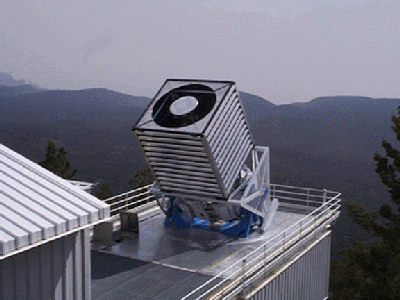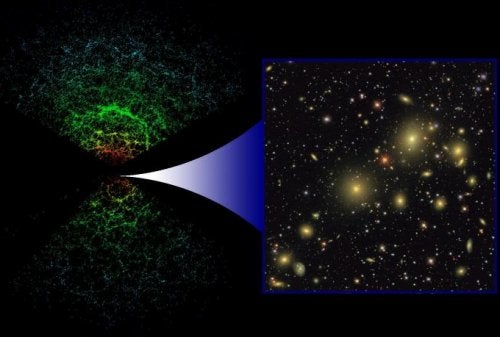Similar to medieval maps of Earth that included both speculations of the unknown and concrete scientific observations, cosmologists today are slowly refining our understanding of the structure and evolution of the universe as a whole. Now, a team of international astronomers has announced they have created a 2-billion-light-year-deep survey map that reveals the most precise makeup of the universe to date.
Mining data from the Sloan Digital Sky Survey (SDSS), the astronomers made precise measurements of the pattern of large-scale clustering of galaxies and associated dark matter. By plotting the three-dimensional positions of 205,443 galaxies spread over six percent of the sky, a group led by Max Tegmark of the University of Pennsylvania obtained the sharpest-ever views of gravitational-clustering patterns between galaxies. While a clumpy variation in density appears on a scale of millions of light-years, a more uniform picture of the universe emerges on larger scales.
The results are slated for publication in the Astrophysical Journal and Physical Review D as two separate papers, and the authors have pegged the overall breakdown of cosmic matter at 70 percent dark energy, 25 percent dark matter, and only 5 percent ordinary matter composed of atoms.
“Different galaxies, different instruments, different people, and different analysis — but the results agree,” explains Tegmark. “Extraordinary claims require extraordinary evidence, but we now have extraordinary evidence for dark matter and dark energy and have to take them seriously no matter how disturbing they seem.”
Verifying previous inflation models, these new results also offer up critical evidence for the existence of dark energy and its critical role in the present-day expansion of the universe. But as co-investigator David Weinburg from Ohio State University points out, “The real challenge now is to figure out what these mysterious substances actually are.”











